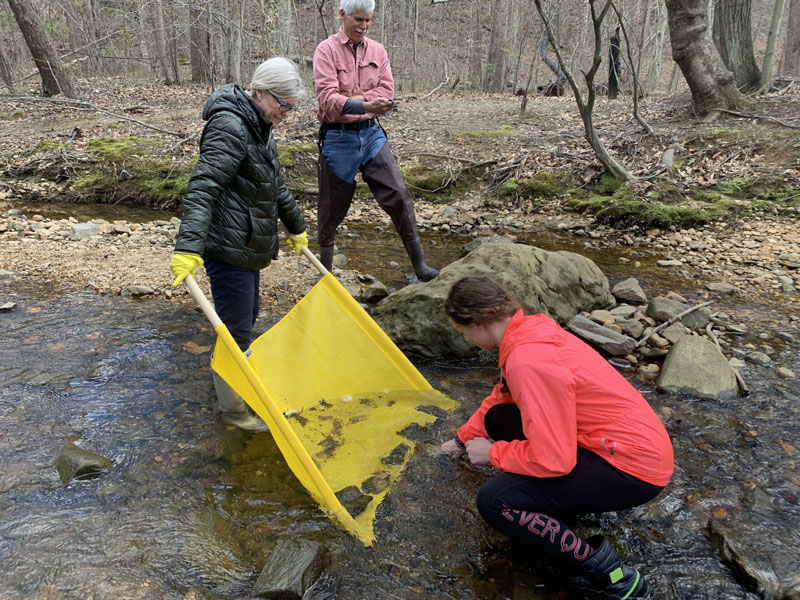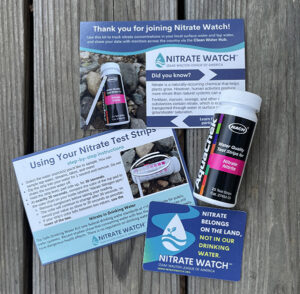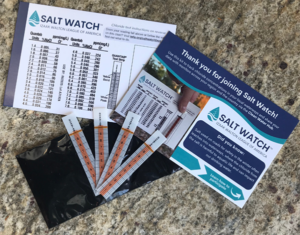Volunteer stream monitors in Virginia have been sampling water quality for over 20 years. Over that time, clear patterns regarding water quality have emerged. Thanks to the Virginia Save Our Streams volunteer monitoring program, we have robust, usable data covering Northern Virginia (NOVA) and the mountain range running along the state’s western border. We have a growing network of monitors in the Richmond area and we’re working on expanding monitoring throughout central and southern Virginia.
Water Quality in Virginia
While one monitoring session can provide an immediate stream health score, the real power of water quality monitoring is revealed over the long term. With regular monitoring over the course of many years, we can identify areas where water quality needs our attention and where it has improved. The map below shows the stream health scores reported by Virginia Save Our Streams volunteers on the Clean Water Hub. Use the date filter at the top to see how our monitoring efforts have expanded and how stream health has changed over time.

2024 Annual Report
The 2024 VA SOS Annual Report is now available. Check out this summary of all the great work our volunteer monitor community did last year.
2024 Annual Report
The 2024 VA SOS Annual Report is now available. Check out this summary of all the great work our volunteer monitor community did last year.
What’s Hurting Water Quality in Virginia?
Many factors can affect stream health: acute pollution events like oil spills or active construction, chronic fertilizer runoff, climate change, and development, just to name a few. By observing how water quality changes or remains steady over time, we can start looking for local, regional, and state-wide patterns.
The data collected by Virginia Save Our Streams volunteers shows, without a doubt, that urbanization and development have had a significant impact on the water quality of streams in Virginia. Impervious surfaces like roads and roofs drive tremendous amounts of polluted runoff into storm drains, streams, and rivers. This water runs untreated into critical sources of drinking water like the Potomac River and reservoirs. Although this water will be treated before it enters people’s homes, some chemical pollutants are difficult to remove.
Virginia Save Our Streams Data and Land Use
The map below compares stream health scores from 2023 with a land use map of Virginia. Zoom in to explore how the highly developed areas (in red) are linked to poor stream health scores in areas near Richmond, Roanoke, the NOVA region, etc. The colored dots mark stream monitoring sites, with each color representing a stream health score: Unacceptable (red), Acceptable (green), and Grayzone (grey). From this map, we can see that streams in rural areas tend to be healthier, while streams in urban areas often struggle with poor water quality.
The Izaak Walton League Is Making a Difference
Over 300 volunteer stream monitors across Virginia are working with the League’s Save Our Streams program to protect and improve water quality in their communities. Certified monitors collect, identify, and sort benthic macroinvertebrates from the stream. Different types of macroinvertebrates have different abilities to live in pollution, so by counting and identifying which macroinvertebrates live in a local stream, volunteers can calculate a stream health score.
Having site-specific and timely water quality information allows us to identify pollution problems, determine how to restore streams, and assess success of restoration efforts. The information our volunteers collect is sent to the Virginia Department of Environmental Quality, who can use this information to target streams for further monitoring, track restoration efforts, and educate the public.

What You Can Do
One of the most important takeaways from our stream health maps is that we need more volunteers monitoring in more places. In the past five years, we have been working to expand data collection into the Piedmont region of Virginia. As data collection has increased in the Richmond area, it has become clear that the area struggles with poor stream water quality. How many other regions are suffering from poor water quality, but people there don’t know it yet because their streams are not monitored sufficiently? How are rural areas in the center of the state faring? Virginia Save Our Streams is focused on training, recruiting, and mobilizing volunteers to collect and report this critical data.
 Your kit will include a bottle containing 25 nitrate test strips which you can use to test your water source(s) throughout the year. You’ll also receive postcards explaining how to use your nitrate test strips and how to share your Nitrate Watch results on the Clean Water Hub.
Your kit will include a bottle containing 25 nitrate test strips which you can use to test your water source(s) throughout the year. You’ll also receive postcards explaining how to use your nitrate test strips and how to share your Nitrate Watch results on the Clean Water Hub. Your kit will include four test strips so you can test your waterway throughout the season. You’ll also receive a chart to help you interpret your results and a postcard with instructions for completing a Salt Watch test and reporting your findings.
Your kit will include four test strips so you can test your waterway throughout the season. You’ll also receive a chart to help you interpret your results and a postcard with instructions for completing a Salt Watch test and reporting your findings.